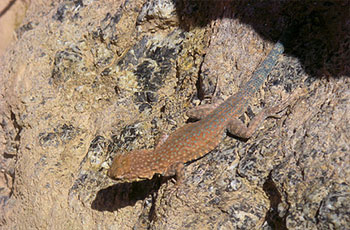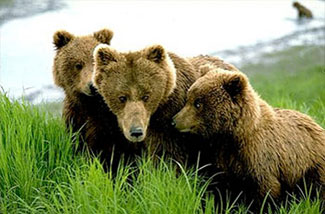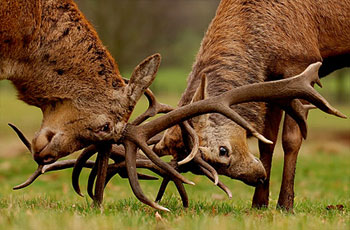Imagine that you woke up this morning to the sound of thunder. When you looked outside you saw large dark clouds in the sky. You hear another boom of thunder and see a flash of lighting in the distance. When you walk out the door to go to school you grab an umbrella. By grabbing the umbrella you responded to external factors or stimuli.

Source: Weather Cloud, OCAL, Clker
Organisms in nature also respond to external factors. Every organism has its own range of tolerance. When an environmental condition, such as temperature, goes above or below an organisms optimum range the organism experiences stress and responds to the stimulus.
Have you ever seen a lizard sitting in the sun like the one pictured here?
The lizard appears to be sleeping but it is actually aestivating. Aestivation is a state of dormancy practiced by certain organisms to protect themselves from heat and dehydration.

Source: Blue Tailed Lizard, Al_HikesAZ_Flickr

Source: Brown Bear Sow and Cubs, beingmyself, Flickr
Animals have certain behaviors that allow them to respond to external stimuli. Some of these traits are learned and some are instinct. For example, bears hibernate in a den each winter when the temperature drops below their tolerance level. Hibernation is instinct. Cubs learn about dens from their mothers and will return to dens they have been to before.
Organisms respond to a variety of factors. These factors can be classified as abiotic or biotic. Abiotic factors that organisms respond to include temperature, water, space, and shelter. Biotic factors are food, mates, and competitors.

Source: Deer Fighting, Stefab_Long18's, Photobucket